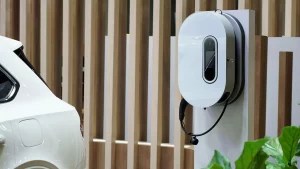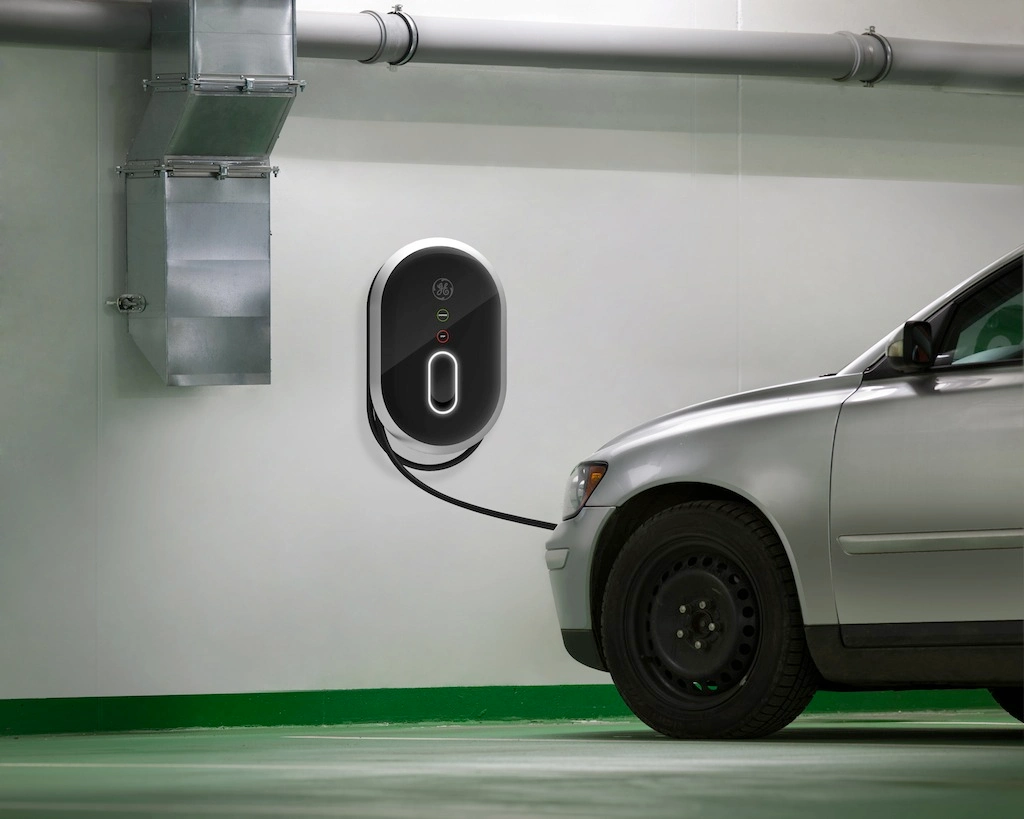Installing a wall-mounted EV charger requires careful planning and execution. The process starts with evaluating the installation site and ensuring it meets structural and safety requirements. Selecting the appropriate charger is vital for compatibility and efficiency. For those looking into how to install a wall-mounted EV charger, following a systematic installation guide is essential for peak performance. Understanding the safety and compliance aspects is equally important. With these considerations in mind, the installation can proceed smoothly and effectively.
Key Takeaways
- Choose an accessible location near your electrical panel and sheltered from weather elements for optimal performance and safety.
- Gather necessary tools and materials, ensuring you comply with local codes and have all equipment ready for installation.
- Securely mount the charger to the wall according to the manufacturer’s guidelines for stability and accessibility.
- Connect the wiring to the electrical supply, adhering to local electrical codes, and consult a licensed electrician if needed.
- Test the charger after installation to ensure it functions correctly and complies with safety standards.
Understanding the Benefits of a Wall-Mounted EV Charger
Installing a wall-mounted EV charger offers several advantages that enhance the electric vehicle (EV) ownership experience. Primarily, it provides convenient, at-home charging, eliminating the need for frequent trips to public charging stations. This not only saves time but also fosters a sense of independence and reliability in EV usage. Moreover, wall-mounted chargers typically offer faster charging capabilities compared to standard outlets, facilitating quicker turnaround times for vehicle readiness. The installation of such chargers can also increase property value, appealing to environmentally-conscious buyers. Additionally, many models feature smart technology that allows users to monitor charging status remotely, enhancing user experience and promoting energy efficiency. Collectively, these benefits contribute to a more fulfilling and seamless EV ownership journey.
Assessing Your Location for Installation
Proper assessment of the installation location is essential when considering how to install a wall-mounted EV charger. First, one must identify the proximity to the electrical panel, guaranteeing that it is within a reasonable distance to minimize wiring costs. Evaluating the wall structure is also important; it should be sturdy enough to support the charger and allow for proper ventilation. Additionally, the chosen location must be sheltered from weather elements to enhance durability and functionality. Accessibility for the vehicle is another factor; the charger should be positioned to facilitate easy connection without awkward maneuvering. Finally, compliance with local codes and regulations is necessary to assure safety and legality in the installation process.

Choosing the Right Wall-Mounted EV Charger
When selecting a wall-mounted EV charger, what key factors should be considered to secure peak performance and compatibility? First, assess the charging speed, typically measured in kilowatts (kW), to match the electric vehicle’s requirements. Next, consider the connector type; confirm it aligns with the vehicle’s port, often either Type 1 or Type 2. The charger’s installation location is also essential; it should be easily accessible and near the electrical panel. Additionally, evaluate the charger’s compatibility with smart features, such as Wi-Fi connectivity, which allows for remote monitoring and software updates. Finally, check local regulations and rebates that may influence the choice of charger, confirming compliance and potential cost savings. This thorough approach fosters informed decision-making in selecting the right wall-mounted EV charger.
Step-by-Step Guide on How to Install a Wall-Mounted EV Charger
A thorough understanding of the installation process is essential for anyone looking to install a wall-mounted EV charger. The following steps outline the installation process:
- Select the ideal location for accessibility and convenience.
- Gather necessary tools and materials, ensuring readiness for a smooth installation.
- Mount the charger securely to the wall, following the manufacturer’s guidelines.
- Connect the wiring to the electrical supply, adhering to local codes.
- Test the charger after installation to confirm proper functionality.
Ensuring Safety and Compliance During Installation
Guaranteeing safety and compliance during the installation of a wall-mounted EV charger is crucial to prevent hazards and meet legal requirements. Proper adherence to local electrical codes is critical; these regulations often dictate the necessary circuit types and breaker sizes. Additionally, utilizing certified equipment guarantees compatibility and safety. It is advisable to consult a licensed electrician to assess the installation site, confirming that the electrical panel can handle the additional load safely. Grounding the charger is also essential to prevent electrical shock. Finally, obtaining the necessary permits and performing inspections can further guarantee compliance with local regulations. By prioritizing these measures, individuals can foster a safe environment, promoting a sense of community responsibility among EV charger users.
Frequently Asked Questions
What Tools Are Needed for Installation?
For installation, essential tools include a drill, screwdriver, level, wire strippers, and a voltage tester. Additionally, appropriate electrical conduit and mounting hardware are necessary to guarantee a secure and compliant setup for peak performance.
Can I Install a Charger Outdoors?
Outdoor installation of a charger is feasible, provided it is weather-resistant and meets local codes. Proper mounting, protection from elements, and a GFCI outlet are essential for ensuring safety and functionality in various weather conditions.
How Long Does Installation Take?
The installation duration typically ranges from two to four hours, depending on the electrical setup and site conditions. Proper planning and skilled labor can optimize this process, ensuring efficient and effective installation of the unit.
Are Wall-Mounted Chargers Compatible With All EV Models?
Wall-mounted chargers are generally compatible with most electric vehicle (EV) models, provided they adhere to standard charging protocols. However, users should verify specific compatibility with their vehicle’s manufacturer to guarantee peak charging performance.
What Maintenance Is Required After Installation?
Regular maintenance of wall-mounted EV chargers includes checking connections for wear, verifying the unit is clean and free from debris, and periodically testing functionality to guarantee peak performance and safety for users.
Conclusion
In summary, installing a wall-mounted EV charger requires careful planning and execution to guarantee peak performance and safety. By understanding the benefits, evaluating the installation location, selecting the appropriate charger, and following a systematic installation guide, users can successfully integrate this technology into their home or business. Adhering to safety standards and local regulations is vital, and consulting with a licensed electrician can further enhance safety and compliance, providing a reliable charging solution for electric vehicles.
You May Also Like To Read:

